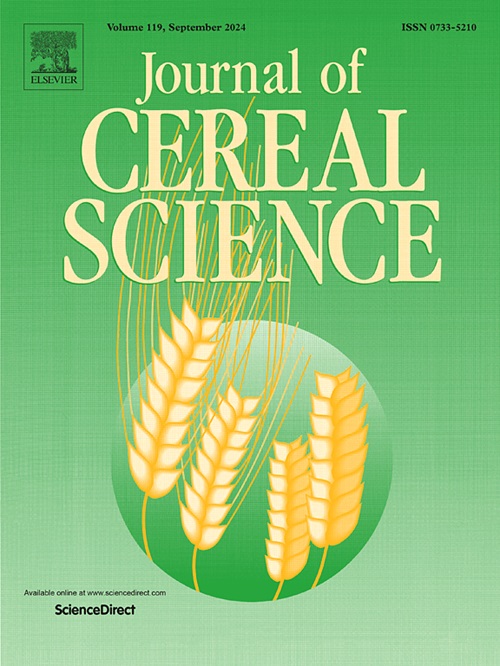Development of a NIRS-based prediction model for measurement of whole wheat flour arabinoxylan content to aid rapid germplasm screening
IF 3.7
2区 农林科学
Q2 FOOD SCIENCE & TECHNOLOGY
引用次数: 0
Abstract
Arabinoxylan (AX) is the primary dietary fiber found in wheat. Analysing AX through biochemical methods is costly and time-consuming. Developing a secondary screening method using near-infrared spectroscopy (NIRS) coupled with chemometric analysis was successful. A NIRS-based prediction model for total arabinoxylan (TOT-AX) and water-extractable arabinoxylan (WE-AX) content was developed using a panel of wheat germplasm lines, including exotic collections, indigenous cultivars and landraces, employing modified partial least square (mPLS) regression. Among various mathematical treatments, the third derivative produced better results, and the model showed RSQinternal values of 0.841 and 0.828, as well as RSQexternal values of 0.694 and 0.605 for the whole wheat flour TOT-AX and WE-AX, respectively present in whole wheat flour. Upon validation on independent sets, an RSQ value of 0.883 for TOT-AX and 0.761 for WE-AX was obtained, proving the reliability of the model. This prediction model provides a rapid and cost-effective method to screen large germplasm, allowing for the identification of high arabinoxylan wheat genotypes.

建立基于nir的全麦面粉阿拉伯木聚糖含量预测模型,以帮助快速种质筛选
阿拉伯木聚糖(AX)是小麦中的主要膳食纤维。通过生化方法分析AX既昂贵又耗时。利用近红外光谱(NIRS)与化学计量分析相结合,建立了一种成功的二次筛选方法。利用改良偏最小二乘法(mPLS)建立了基于nirs的小麦种质系(包括外来品种、地方品种和地方品种)总arabinoxylan (TOT-AX)和水提arabinoxylan (w - ax)含量预测模型。在各种数学处理中,三阶导数的结果较好,模型显示全麦面粉中存在的TOT-AX和e - ax的RSQinternal值分别为0.841和0.828,RSQexternal值分别为0.694和0.605。经独立集验证,TOT-AX的RSQ值为0.883,WE-AX的RSQ值为0.761,证明了模型的可靠性。该预测模型为筛选大型种质提供了一种快速、经济的方法,可用于鉴定高阿拉伯木聚糖小麦基因型。
本文章由计算机程序翻译,如有差异,请以英文原文为准。
求助全文
约1分钟内获得全文
求助全文
来源期刊

Journal of Cereal Science
工程技术-食品科技
CiteScore
7.80
自引率
2.60%
发文量
163
审稿时长
38 days
期刊介绍:
The Journal of Cereal Science was established in 1983 to provide an International forum for the publication of original research papers of high standing covering all aspects of cereal science related to the functional and nutritional quality of cereal grains (true cereals - members of the Poaceae family and starchy pseudocereals - members of the Amaranthaceae, Chenopodiaceae and Polygonaceae families) and their products, in relation to the cereals used. The journal also publishes concise and critical review articles appraising the status and future directions of specific areas of cereal science and short communications that present news of important advances in research. The journal aims at topicality and at providing comprehensive coverage of progress in the field.
 求助内容:
求助内容: 应助结果提醒方式:
应助结果提醒方式:


